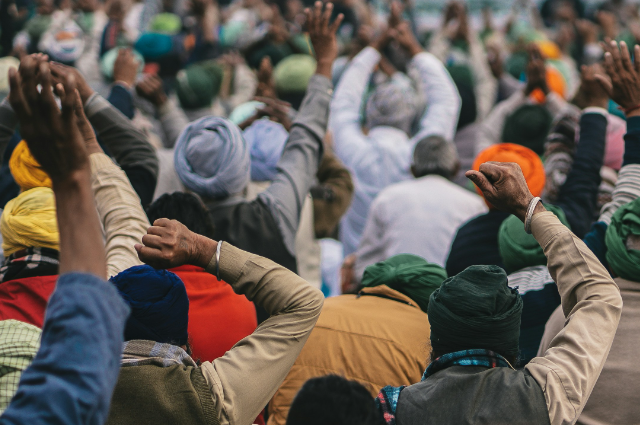
Photo by Rupinder Singh on Unsplash
Introduction:
The ongoing farmer protests in India have not only captured national attention but also sparked a broader discourse on agrarian issues, socio-economic disparities, and governance. This essay aims to delve into the recent developments in the farmer protests, focusing on their demands, grievances, and the continued mobilization of farmer groups.
Effigy Burning and Meeting Schedule:
On February 26, farmer leaders announced plans to burn effigies of the World Trade Organization (WTO) and the Central government, symbolizing their discontent with trade policies and agricultural reforms. Additionally, meetings of forums associated with the Samyukt Kisan Morcha (SKM) and Kisan Mazdoor Sangharsh Committee (KMM) are scheduled for February 27 at border points, with a common meeting on February 28.
The protests are also embroiled in a conflict with the Punjab government regarding the registration of an FIR in the death of Shubhkaran Singh, a young farmer killed during clashes at the Khanauri protest site. Farmer leaders insist on an FIR against those responsible for Singh's death and demand martyr status for him.
Candle March and Seminars:
Prior to these developments, the SKM (Non-Political) and KMM organized a candle march on February 24 at border points, highlighting solidarity and continued activism. Furthermore, seminars on removing the agriculture sector from WTO agreements were organized at the Shambhu and Khanauri border points on February 25.
Additional Demands and Grievances:
Amidst these activities, protesting farmers reiterated their demands, including a legal guarantee for Minimum Support Price (MSP) for crops, a farm loan waiver, implementation of the Swaminathan Commission's recommendations, pension for farmers and farm laborers, no hike in electricity tariffs, withdrawal of police cases, justice for victims of the 2021 Lakhimpur Kheri violence, reinstatement of the Land Acquisition Act, 2013, and compensation for families of farmers who died during previous agitations in 2020-21.
Conclusion:
The farmer protests in India continue to evolve as farmer groups persist in their demands and mobilization efforts. The grievances encompass a wide range of socio-economic and political issues, reflecting deep-rooted concerns within the agrarian community. As the protests persist, the government faces mounting pressure to address the farmers' demands and engage in meaningful dialogue to resolve the ongoing impasse.
